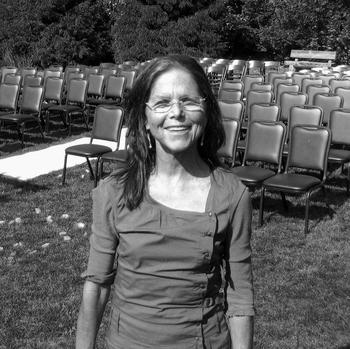Katherine Mezur

Interweaving Performance Cultures
Fellow 2010/11
Katherine Mezur is a scholar/artist whose research focuses on transnational dance/theatre performance, gender studies, and new media performance in the Asia-Pacific region. She holds a PhD in Theatre and Dance, emphasis on Asian Performance, from the University of Hawai'i, Manoa. She is author of Beautiful Boys/Outlaw Bodies: Devising Female-likeness on the Kabuki Stage (Palgrave Macmillan), a history of the kabuki female gender performance and its contemporary practices, aesthetics, and politics. She choreographs and directs musicals, and experimental performance/media works. Her current research/practice focuses on the migrations of corporeal cultures through performance and visual art, which includes contemporary butoh’s ‘diaspora’ and dance theatre/media works by North-East Asian artists. She has taught at Georgetown University, the University of Washington, Seattle, and CAL Arts. Her articles appear in journals such as Discourses in Dance and Women and Performance. She is advisor/director for the ‘New Dance’ grant program at the Yerba Buena Center for the Arts (San Francisco, CA).
Research Project
Bodies in Translation and Transformation
Cute Mutant Girls: Live Performance and New Media Art by Japanese Women Artists
Girl culture, within the broader context of youth culture in Japan, has become a driving and dynamically evolving force in contemporary Japanese society. New media forms of performance, gaming, video installation, and live digital projections, are also compelling and critical contexts for deepening questions of globalization, ecology, and human rights. This research project combines these two vigorous streams of invention in an examination and analysis of the work of young Japanese women artists who create across the disciplinary boundaries of live performance and new media. These women are part of the ‘girl culture’ movement, which has contributed to the transnational migration of youth culture throughout contemporary Asia, Europe, Africa, and the Americas. I will focus on the intersection of new digital media with physical practices, in such forms as experimental dance, butoh, cosplay (costume play), anime characters, live art with projections, and video installation/performance works.
What makes this transnational project particularly significant is the foregrounding of human bodies in performance as the active agents of the preservation, transformation, and provocation of cultural iconography, governments and their political ideologies, and in my case, the myth of Japaneseness or more broadly, the ‘belonging to’ one culture or nation. Bodies are paradoxically and dynamically subjects and objects of their ‘culture.’ Because this project also deals with Japanese artists who have lived outside their ‘home’ culture, it also resonates with themes of indigenization, migration, and circulation. Further dance theatre and new media are interwoven in both the use of new media in performance and on the internet in other cyberspace forms.
Selected Publication
- Mezur, K., Beautiful Boys/Outlaw Bodies: Devising Kabuki Female-likeness, New York: Palgrave Macmillan, 2005.
